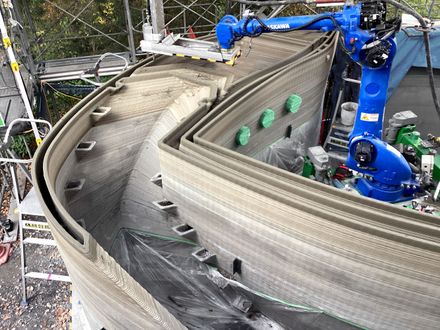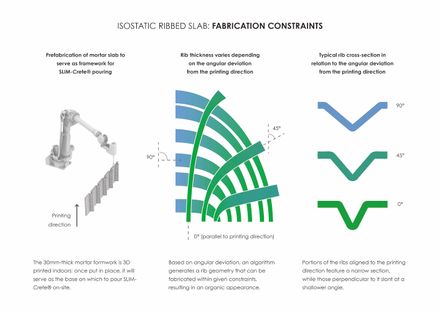3dpod Pavilion
ARCHITECTS
Obayashi
MEP ENGINEERING
Hirohide Shimaoka, Ryuichi Yamagata, Taketo Koyama, Kota Miyazaki
STRUCTURAL ENGINEERING
Koichi Nakatsuka, Takahiro Suzuki, Yuji Fukumi, Kazusa Nishimura
ARCHITECTURAL DESIGN
Marco Capitanio, Akito Masumura
MANUFACTURERS
Dn Lighting, Daiko, Sanwa Tajima
ARCHITECTURAL DESIGN & MANAGEMENT
Yasuo Ichii, Tatsuji Kimura
3 D PRINTING TECHNOLOGY
Tomoya Kaneko, Yoshikazu Ishizeki, Hajime Sakagami, Haruna Okawa
LOCATION
Kiyose, Japan
CATEGORY
Installations & Structures, Installation
3D-printed, earthquake-proof building completed in Tokyo: 3dpod. Obayashi, one of the largest general contractors in Japan, founded in 1892, has completed “3dpod”, the first 3D-printed and earthquake-proof building in the country to receive ministerial certification and a building permit.
The demonstration facility, open to the public, was built to evaluate the durability, structural, and environmental performance of 3d-printing, and to foster further its technological development.
Architectural 3D printing is particularly challenging in earthquake-prone Japan, and, due to building regulation restrictions, it has so far been employed only in civil engineering and non-habitable, small structures.
The main goal of the project was to meet the strict local requirements without relying on conventional reinforcement.
3dpod is printed with a special mortar, acting both as an internal and external finishing surface as well as the framework for the load-bearing structure, made of a high-strength concrete reinforced with steel fibers, called “SLIM-Crete®”.
This construction method does not require the placement of reinforcing bars or steel frames, not to limit the aesthetic potential of 3D printing.
The pod-like shape is derived by maximizing the ratio between interior space and wall-surface area, i.e., achieving the largest internal volume with the least amount of material, given the technical printing constraints and the limitations of the site.
The walls are multi-layered, combining load-bearing structure and cavities for insulating material, equipment routing, and a system for radiant heating and cooling, to afford the level of habitability of a conventional building.
Construction time can be reduced by designing and printing these systems at once, being able to carry out different construction tasks simultaneously.
The slab design features strengthening ribs following principal stress lines, a means of material economy achieving aesthetic and spatial qualities at the same time: This outcome would have been unfeasible using conventional construction methods.
To fabricate 3dpod, a robotic printer was installed on-site, printing the mortar formwork directly onto the foundations.
The roof-slab formwork was instead printed as a precast element at a nearby facility, then placed on top of the walls and capped with SLIM-Crete®, creating a shell structure.
Thereafter, the 3D printer was placed on the roof slab to finish off the parapet of the walkable deck, demonstrating the technical feasibility of a multi-storied printed building. Even though 3dpod is the result of cutting-edge digital fabrication, it retains a certain warmth and haptic appeal.
This is due to the unique texture emerging from on-site construction methods, which are reminiscent of craftsmen’s handiwork and grant the building an appealing roughness and primitive aura.
Architectural 3D printing can reduce labor demand on the construction site, shorten construction time through automation, and save on CO2 emissions, thanks to reduced transportation of building materials.
At Obayashi, we will continue to advance the development of 3D printing in the AEC industry, targeting the chronic shortage of skilled workers and construction issues in remote areas, all the while promoting the diversification of building materials, and aiming for a localized construction process.

































